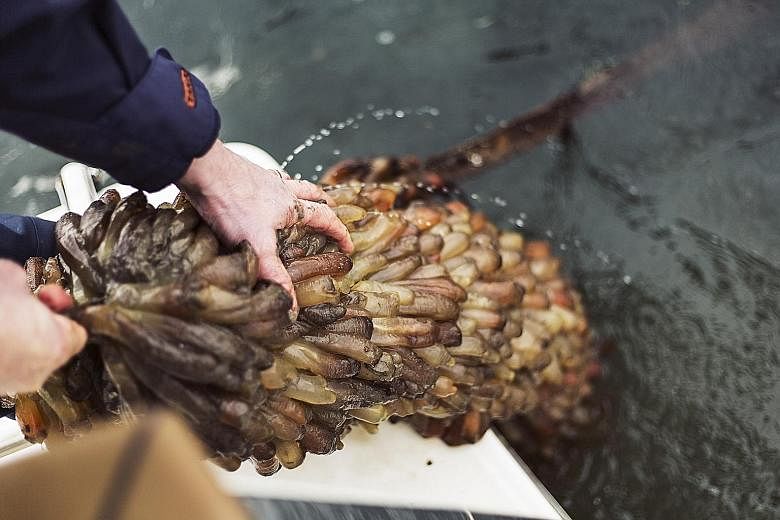SWEDEN • Large grey plastic drums bob up and down in rows on the waters of Hake Fjord, a bay in Sweden. They are the only visible signs that an offshore area east of Tjorn is a biogas cultivation site, and that it is harvest time.
As the boat approaches the shore, sea squirts underwater can be seen.
"They are basically mussels without shells - sessile filter feeders that eat phytoplankton. After about a year, they die and sink to the bottom, where they become food for other animals," said Mr Fredrik Noren, head of research and development at Marin Biogas.
The company aims to extract biogas and eco-fertiliser from sea squirts, which are about to be harvested on a large scale for the first time.
"It's actually the world's first sea squirt harvest," said Mr Noren, a marine biologist who also works on projects for the IVL Swedish Environmental Research Institute.
The idea of growing sea squirts has been around for years.
In 2009, Mr Noren applied to patent a method for extracting biogas from them. The sea squirt is an invertebrate that grows rapidly, making it a good potential source of biogas. Each tonne of harvested sea squirts can produce biogas equivalent to 20 litres of petrol, along with fertiliser.
Until now, their rapid growth rate made sea squirts a nuisance for mussel farmers. They like the same habitats as mussels and can invade mussel farms.
"The cultivation we have here was originally an unsuccessful mussel farm that sea squirts took over. If our project is successful, it could enable mussel farmers to get something out of even unsuccessful cultivation," said Mr Noren.
He pointed out that they were still at a trial stage, and said: "Proteins can be used to make food products, such as animal feed, and the cellulose is also appealing. We have many ideas in the pipeline."

